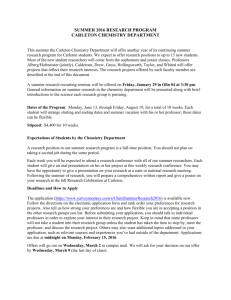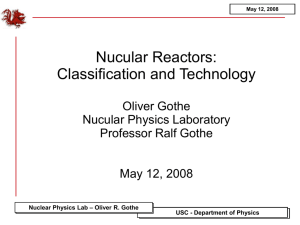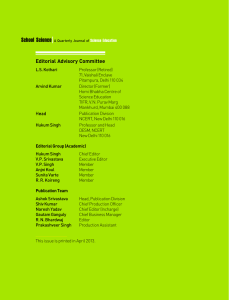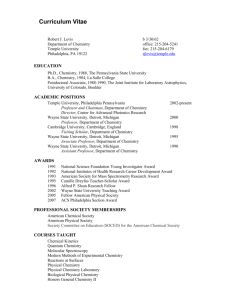报告人学术简介:
advertisement
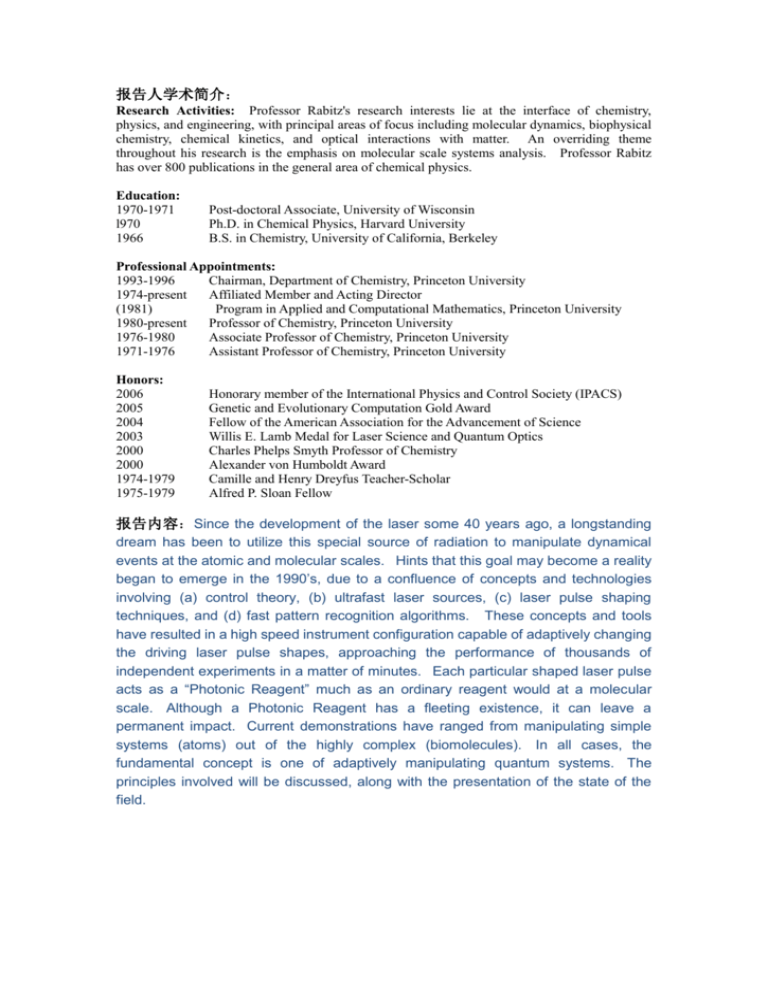
报告人学术简介: Research Activities: Professor Rabitz's research interests lie at the interface of chemistry, physics, and engineering, with principal areas of focus including molecular dynamics, biophysical chemistry, chemical kinetics, and optical interactions with matter. An overriding theme throughout his research is the emphasis on molecular scale systems analysis. Professor Rabitz has over 800 publications in the general area of chemical physics. Education: 1970-1971 l970 1966 Post-doctoral Associate, University of Wisconsin Ph.D. in Chemical Physics, Harvard University B.S. in Chemistry, University of California, Berkeley Professional Appointments: 1993-1996 Chairman, Department of Chemistry, Princeton University 1974-present Affiliated Member and Acting Director (1981) Program in Applied and Computational Mathematics, Princeton University 1980-present Professor of Chemistry, Princeton University 1976-1980 Associate Professor of Chemistry, Princeton University 1971-1976 Assistant Professor of Chemistry, Princeton University Honors: 2006 2005 2004 2003 2000 2000 1974-1979 1975-1979 Honorary member of the International Physics and Control Society (IPACS) Genetic and Evolutionary Computation Gold Award Fellow of the American Association for the Advancement of Science Willis E. Lamb Medal for Laser Science and Quantum Optics Charles Phelps Smyth Professor of Chemistry Alexander von Humboldt Award Camille and Henry Dreyfus Teacher-Scholar Alfred P. Sloan Fellow 报告内容:Since the development of the laser some 40 years ago, a longstanding dream has been to utilize this special source of radiation to manipulate dynamical events at the atomic and molecular scales. Hints that this goal may become a reality began to emerge in the 1990’s, due to a confluence of concepts and technologies involving (a) control theory, (b) ultrafast laser sources, (c) laser pulse shaping techniques, and (d) fast pattern recognition algorithms. These concepts and tools have resulted in a high speed instrument configuration capable of adaptively changing the driving laser pulse shapes, approaching the performance of thousands of independent experiments in a matter of minutes. Each particular shaped laser pulse acts as a “Photonic Reagent” much as an ordinary reagent would at a molecular scale. Although a Photonic Reagent has a fleeting existence, it can leave a permanent impact. Current demonstrations have ranged from manipulating simple systems (atoms) out of the highly complex (biomolecules). In all cases, the fundamental concept is one of adaptively manipulating quantum systems. The principles involved will be discussed, along with the presentation of the state of the field.








